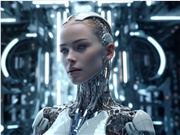Sakana AI's newly developed AI Scientist-v2 model has achieved a breathtaking feat: it independently authored a complete scientific paper, from conception to completion, without any human intervention. Even more astonishingly, this paper successfully passed the double-blind peer review of the ICLR 2025 workshop, fooling human experts.
This AI-generated paper represents a fully end-to-end autonomous creation. Sakana AI confirms that the entire process was completed without any human modification. AI Scientist-v2 demonstrated incredible comprehensive capabilities – it independently formulated scientific hypotheses, designed experimental plans, wrote and optimized experimental code, executed experiments, analyzed data, created visualizations, and wrote every character from the title to the references, including formatting and layout.

Image Source: Image generated by AI, licensed through Midjourney
Although the paper successfully passed peer review, a crucial hurdle in academia, Sakana AI ultimately made the responsible decision to retract it. This decision reflects their commitment to academic ethics, as the academic community currently lacks clear guidelines on the publication of AI-generated content. Sakana AI stated that they hope the academic community will establish relevant standards before hastily allowing AI scientists to publish papers.
This event marks a significant breakthrough for AI in scientific research, but it also raises profound questions about academic integrity, authorship attribution, and the boundaries of AI participation in academic research. Balancing academic innovation with research integrity will be a pressing issue that the scientific community must address.






